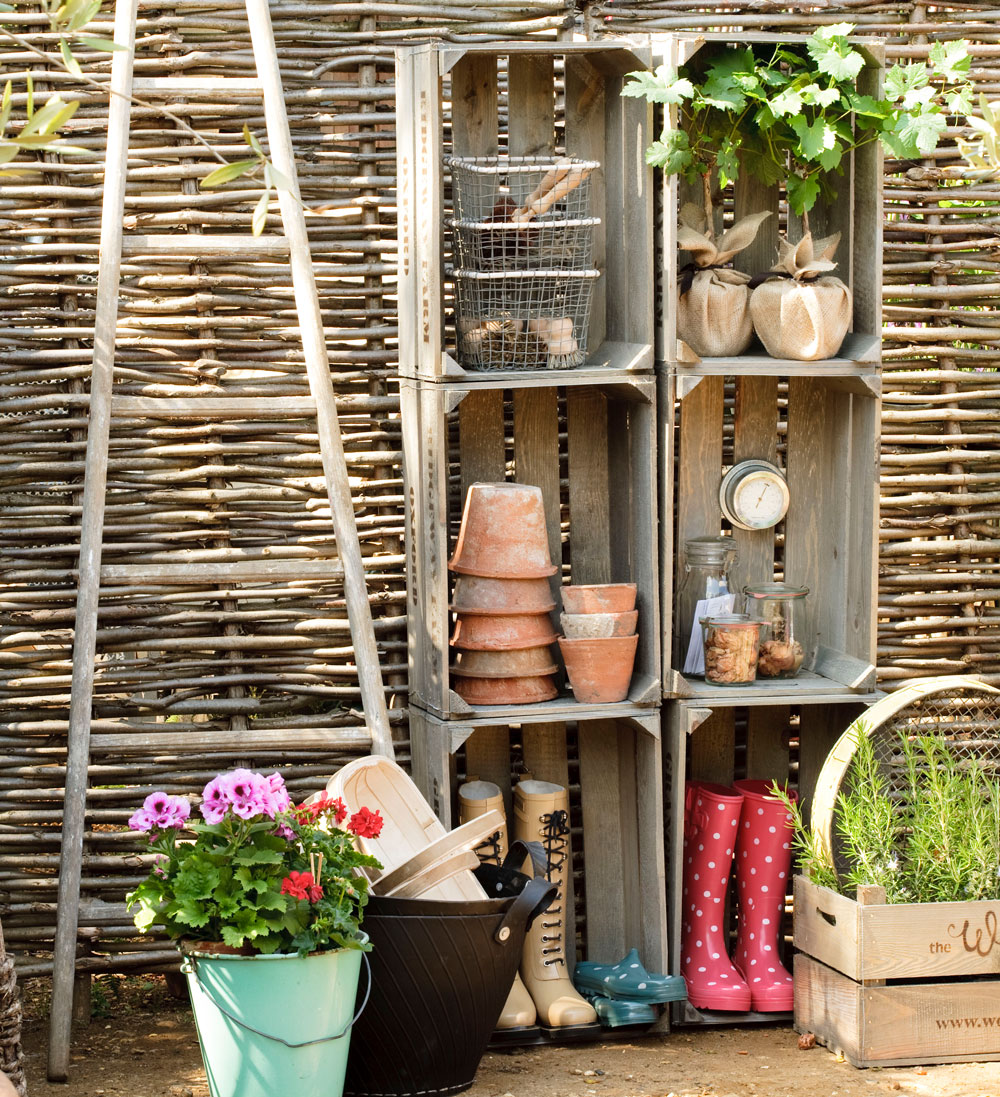25+ Low Cost Rustic Garden Features
In a new yard where there is nothing but a lawn or bare soil, or in a well-established garden, an easy, inexpensive way to enhance the property is to use natural pieces.
Where there is only flatness, new texture and the effect of different levels can be developed by the placement of inexpensive, natural features. As plants, shrubs, and trees mature, the property will be more visually pleasing with the additional pieces included. If a perennial dies and leaves a vacant spot, consider replacing it with a piece of natural sculpture.
Table of Contents
Rustic Garden Features That Cost Little or Nothing
There are many natural pieces that, by themselves, may seem unimportant. When placed in a perennial border among plants of different shapes and sizes, those pieces can add special interest. Sometimes wanting to do something different and using imagination can result in a wonderful effect.
Gardeners are usually quite observant when looking at the gardens of their friends and neighbors. An idea will form and may be dormant until a very special piece of natural stone or wood is found. They know then exactly where to place it for a dramatic touch.
Cheapest Natural Treatment in the Landscape
A fallen branch from a tree can become an effective piece of sculpture with a little imagination. Large ones that are trimmed and placed in a corner are quite pleasing as background for the garden. They could be used for hanging a bird feeder that, to continue the theme, is made of a hollowed-out piece of log. Smaller branches standing up can be integrated into the over-all design.
Small, sturdy branches work well as support for tall plants that droop over when in full bloom. Select those that have additional stems and place them in a criss-cross pattern in the front and back of the plants. If they are pushed deeply enough into the soil (without damaging roots), and set at an angle, they will hold the plant in a natural shape.
Natural Stones, Loose Stones, and Rocks
During construction of a new garden, stones and rocks are usually uncovered and often discarded. It’s a good idea to keep them until the landscaping is completed. Rocks strategically placed, singly or in groups, can add significantly to the garden’s appearance.
Within a wide garden, any flat stones set in prior to planting can provide a place to step or stand while tending to the plants. In a rustic garden, those stones do not have to match in texture or color. Pieces of broken cement also form an interesting stepping stone area.
Smaller, loose stones can be used to outline a flower bed that adjoins a patio or stretch of pavement. Place them at random either in front of larger stones or by themselves. Mix the different colors and shapes to create a simple boundary. A wavy pattern is very attractive. Let those stones gather moss if they will, to add new texture.
Gardeners Landscaping Naturally with Burls and Tree Stumps
Sometimes, with amazing good luck, a gardener will find a piece that is a delightful addition to the garden. Maybe a friend will find it and present it as a gift. One such piece is a maple burl (a large, knotty growth from the trunk or branch of a tree). It was found years ago and now sits in a perennial border, looking very much like a large bird. Every year, the little mound of moss that forms on its ‘head’ has the appearance of a cap.
Some gardeners are fortunate in that they have access to properties where they find interesting objects. An old, dried-out tree stump adds a wonderful highlight to the garden. It is not only a part of the scene, it is also a place where birds and dragonflies land, and chipmunks frolic, sit on the top or poke their heads out of the knotholes.
While searching for natural landscape items, it is important that the environment and property ownership are respected.

























Image credits: houzz, Ideal Home, Funky Junk Interiors,






